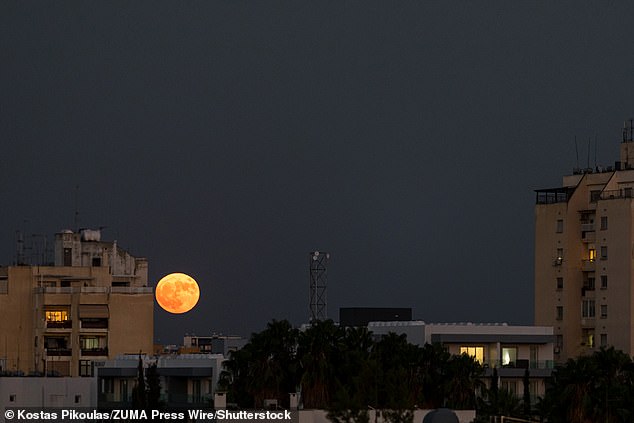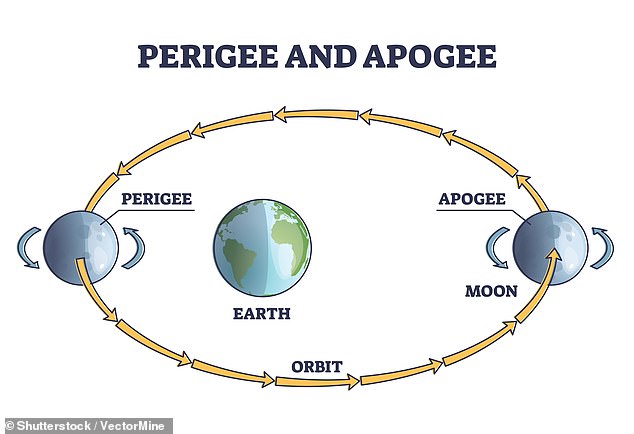Rare supermoon will light up the night sky this week – here’s how to spot this celestial wonder
This month a rare supermoon will light up the night sky, bigger and brighter than any moon we’ve seen this year.
August’s full moon, also known as the Sturgeon Moon, will shine brightly in the night sky on August 19, when the moon will shine about 30 percent brighter than usual in the evening.
Astronomers advise Americans to head outside just after 8 p.m. ET to get the best views.
But if you miss this one, there will also be a number of giant moons visible in a row over the coming months.
The supermoon Sturgeon will light up the night sky on August 19, followed by three more supermoons in the months that follow.
The Sturgeon Moon will be fullest on August 19 at 2:26 p.m. (Eastern Time), but people in the US won’t be able to see it at that time.
That’s because it will be on the other side of the Earth. Hopeful viewers in the U.S. will have to wait until the moon rises, which will be around 8:07 p.m. ET, according to the Farmer’s Almanac.
On the East Coast, the supermoon will rise in the east-southeast, peaking about a third of the way up the sky. It will set in the west-southwest around 7:00 a.m.
Supermoons are largest and brightest when they are closest to the horizon, so they are best seen just after moonrise or just before moonset.
This is because when the Moon is close to the horizon, objects such as trees and buildings that are comparable in size to the Moon can also be seen.
This creates an optical illusion that makes the Moon appear larger than it does when it is high in the sky, without any nearby objects to compare it to.

An optical illusion makes supermoons appear largest and brightest when they are close to the horizon.
The moon will be large and bright enough to be easily seen in the U.S., but be sure to check the weather forecast ahead of time. Cloudy skies may obscure your view.
Find a location with a clear view of the horizon, such as a beach, hill, or field.
If you live in the city, it’s best to look for a dark sky, as light pollution can reduce the brightness of the moon.
To view the moon’s details up close, such as craters, bring binoculars and a telescope.
But if you miss this month’s supermoon, don’t worry. You still have three more chances to see one in the coming months.
After this month, the next supermoons of 2024 will occur on September 18, October 17, and November 15.
Supermoons occur three to four times a year, always in consecutive months.

Supermoons occur when the full moon is at perigee: the point at which the moon is closest to Earth.
They cast about 30 percent more light on the planet than the Moon does when it is at its dimmest.
That’s because they occur when the full moon passes very close to our planet, allowing more of the sun’s rays bouncing off the moon’s surface to reach Earth.
The distance between the Earth and the Moon varies because the Moon follows an elliptical (oval) orbit around our planet.
During its orbit, the Moon’s distance from our planet varies between 366,000 and 366,000 kilometers.
If the full moon followed a perfectly circular path, the size and brightness of the moon would never appear to change.
The point at which the moon is closest to the Earth is called the “perigee.” At this point, the moon appears about 14 percent larger than when it is at “apogee” – the furthest point away.
The closest supermoon this century will occur on December 6, 2052.
